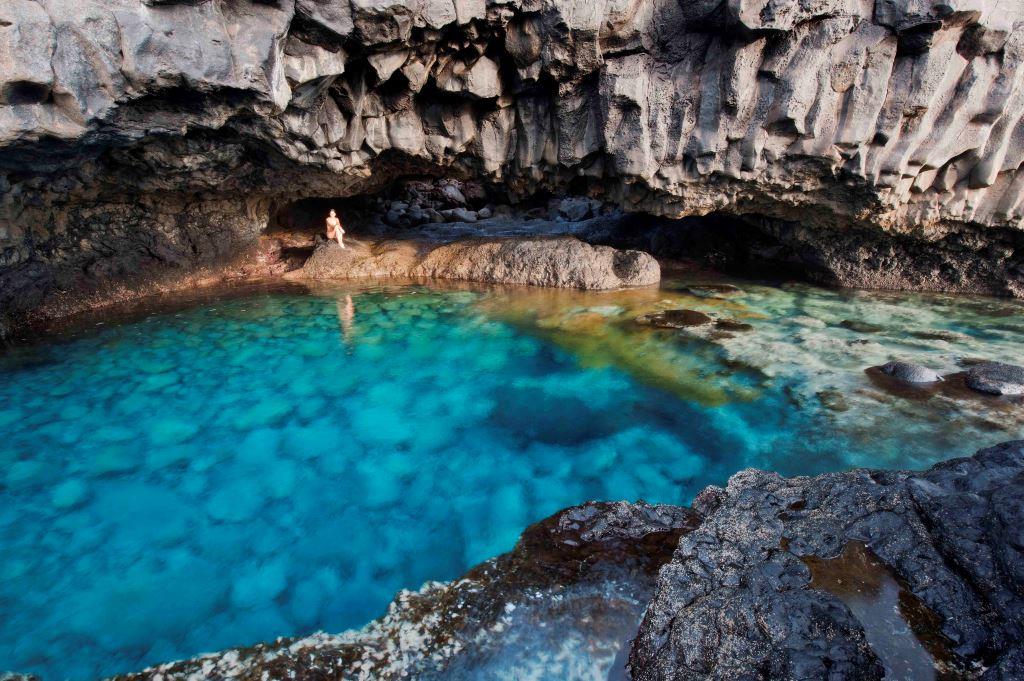
- English
- Español
Seven not-to-be-missed places this summer inland on the Canary Islands

- The archipelago presents a ‘refreshing world inland’ as an extra to relaxing on its attractive beaches
- Charming villages, ancient woodland and viewpoints among the clouds are the inland attractions this summer
- These areas are protected by UNESCO for their great environmental value and heritage
- The year-round mild climate of the Canary Islands allows visitors to visit the interior of the archipelago in summer and cool off surrounded by nature
The Canary Islands, 6 June 2017 – In addition the Canary Islands’ unique and attractive beaches, the archipelago possesses a ‘refreshing world inland’ worth discovering this summer as an alternative to resting and relaxing on the coast. Thanks to its mild year-round temperatures and long sunny days, venturing inland on the Canary Islands and into its volcanic nature is to enjoy forests, trails, national parks, exceptional viewpoints and charming historic villages, the very heart of the islands.
They are ideal places to wander around on foot, either among emblematic buildings of great cultural interest or a spot off the beaten track that betrays the history of the islands and its people. This explosion of nature is not at odds with the increased range of high-quality hotel accommodation and diversity to enjoy unique and unforgettable holidays.
There are seven places on the Canary Islands, which for their charm and ambience should not be missed this summer.
TENERIFE: Historic quarters of La Laguna
A UNESCO world heritage site, the historic ensemble of La Laguna, with its colonial architecture, is the first unfortified town laid out and built in the 15th century according to a plan based on navigation, the science of the time. It was the first city to be built on the Canary Islands and is now a cultural and university hub that no-one who visits Tenerife should miss. Without walls but with a large pedestrian shopping area, it is inviting for families to wander around and discover its palaces, churches and convents, starting with the neoclassical cathedral.
GRAN CANARIA: Cueva Pintada
In addition to its almost 60 kilometres of beaches and over 26,000 hectares declared as a Biosphere Reserve, it is also possible to wander through a prehistoric settlement on Gran Canaria. To the north of the island is the archaeological museum and site ‘Cueva Pintada’, a painted cave recognised with the CICOP Foundation’s International Award (a Spanish non-profit heritage foundation) which houses the remains of a native Canarian settlement and allows a glimpse into the island’s history. A walkway across the archaeological remains leads to a cave containing extraordinary rock paintings, ideal for restless travellers who like knowing the past of their holiday destination. The cave is open to the public from Tuesday to Sunday with guided tours and screenings to better understand the secrets of this archaeological site and its conservation.
LANZAROTE: The legacy of César Manrique
Lanzarote could have been an island sculpted by an artist - its exquisiteness highlights the harmony between art and nature. The multi-disciplinary artist César Manrique, universal creator and pioneer of environmentalism, left his mark on what he considered ‘the most beautiful place on earth.’ A large part of his work is found on the island, such as the Jameos del Agua caves, the Jardín del Cactus (Cactus Garden) and the Mirador del Río (River Viewpoint), including the César Manrique Foundation, which receives thousands of visiting tourists each year. Its legacy is a first-rate tourism attraction which includes not only Lanzarote, but the whole archipelago. In 1993 the island was recognised as a Biosphere Reserve by UNESCO for its great environmental value.
FUERTEVENTURA: Dunas de Corralejo National Park
Next to the large tourism resort of Corralejo in the north of Fuerteventura is the largest collection of dunes on the Canary Islands, a huge expanse of fine white sand bathed by the turquoise waters of the Atlantic Ocean. Its desert-like appearance makes it hard to believe that the dunes give way to one of the most heavenly beaches of the Canary Islands. The southern end is completely the opposite, all ochre and red with rugged, dramatic shapes that remind visitors of its origin as an area of volcanic cones. Remember to bring a towel, a drink and some sun cream (and something to swim in although not everyone does) when visiting the Dunas de Corralejo National Park, and boots if you want to climb the 300 metres up the Montaña Roja volcano to take a photo of the neighbouring islands of Lanzarote and La Graciosa rising up out of the sea.
LA PALMA: Los Tilos Laurel Forest
The area inland on the island of La Palma is home to a wealth of biodiversity and greenery that makes it look like an enchanted place, where clouds and trees collide. An innocuous and tranquil wilderness which is the leafy habitat for one of the largest laurel forests on the Canary Islands, full of moss, silence and freshly fallen leaves. The Los Tilos forest first developed thousands of years ago and has remained intact as one of the last-remaining laurel and broadleaf forests in the world which millions of years ago were widespread across the planet. The place is well worth a visit, and was declared a UNESCO Biosphere Reserve in 2002, protection that now includes the whole of the island of La Palma. Walking through the heart of the woodland and climbing around a thousand metres to reach the refreshing Marcos y Cordero springs merits the effort.
LA GOMERA: Los Roques Viewpoints
Garajonay National Park shows off an unusual perspective from great heights, thanks to a collection of superb viewpoints that look out over some spectacular views of the symbol of the island of La Gomera. They take in five enormous magma-formed rounded blocks which never reached the surface but now stick out over the forest canopy due to erosion and form part of the island’s UNESCO Biosphere Reserve landscape. The viewpoint between the Agando and La Laja rocks is beautiful at dawn and dusk when the 180 metres of the nearby Agando rock is tinted red. La Zarcita, Carmina and Ojila are the names of the other three rock formations that stand watch over the island.
EL HIERRO: Charco Azul
The Charco Azul is one of the most beautiful saltwater natural swimming pools of those hidden on the archipelago. Its deep turquoise colour shining in the volcanic setting of the magnificent El Golfo Valley is like one of César Manrique’s creations, although it is a true work of nature. Despite it being a pristine and seldom-visited spot, it is not hard to get to on foot to enjoy a full range of the many lava forms left behind. Given its beauty, Charco Azul is one of the island's most iconic images.
About the Canary Islands
The Canary Islands is the place with The best climate in the world for enjoying exceptional holidays any time of the year. Seven different and unique islands, perfect for disconnecting from your daily routine, recharging your batteries and returning home feeling physically and mentally refreshed. The beaches, volcanic landscapes, lively and hospitable lifestyle and the possibility of choosing from all sorts of outdoor activities, as well as a wide range of quality accommodation and leisure activities, mean that the majority of visitors repeat the experience more than once.
About Promotur Turismo de Canarias
Promotur Turismo de Canarias, an entity attached to the Department of Tourism, Culture and Sport of the Regional Government of the Canary Islands, oversees the promotion of the Canary Islands tourism brand. Created in 2005, the main goal of this public company is to study, promote and market the huge tourist offer the Canarian archipelago affords, in conjunction with the other institutions on the islands related to the tourist sector.
Press Contact:
brezo.rodriguez@porternovelli.es // alberto.tapia@porternovelli.es
Follow Canary Islands on social networks!
Canary Islands –http://www.hellocanaryislands.com/









 Return
Return